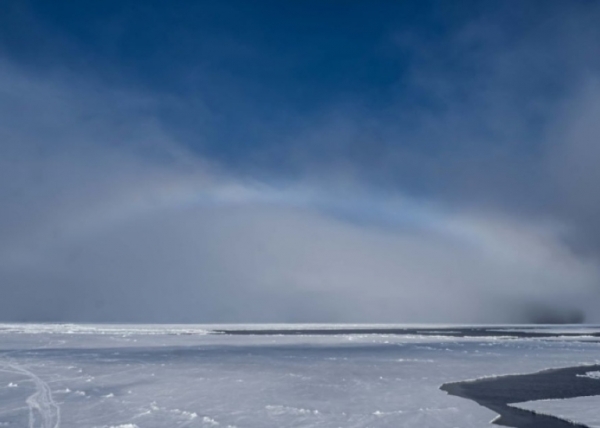”The spring has finally arrived,” announced Michael Tjernström, Professor at Stockholm University and Chief Scientist of ARTofMELT2023 to the expedition participants during the routine breakfast meeting at 08.30 UTC on June 10th. Excitement mixed with relief filled the room.
For the previous five weeks, the scientists have been eagerly awaiting a strong inflow of warm and moist air coming from further south – a so-called atmospheric river (AR) – that would trigger the sea ice melt signaling the transition to summer in the High Arctic. Studying the effects of atmospheric rivers on the ice surface is one of the main objectives of ARTofMELT2023 as such findings could help to more reliably predict future climate in the Arctic and globally.
“I was beginning to fear we would miss the melt onset since it was so late. But it came now just at the end of the expedition and it is a pity we can’t extend the expedition another week! We have been relatively unlucky with warm air intrusions so far, but we were now at the tail end of a transient atmospheric river, and it is absolutely amazing to see how fast the ice surface is now changing. One day with temperatures above zero and one can see where melt ponds are forming, one more and we already have a few azure-blue melt ponds on the ice floe next the Oden,” says Michael Tjernström.
Read more at: Stockholm University
When the sun breaks through, bog bows have become more common; a cousin to the more elaborate rainbow. (Photo Credit: Michael Tjernström)


